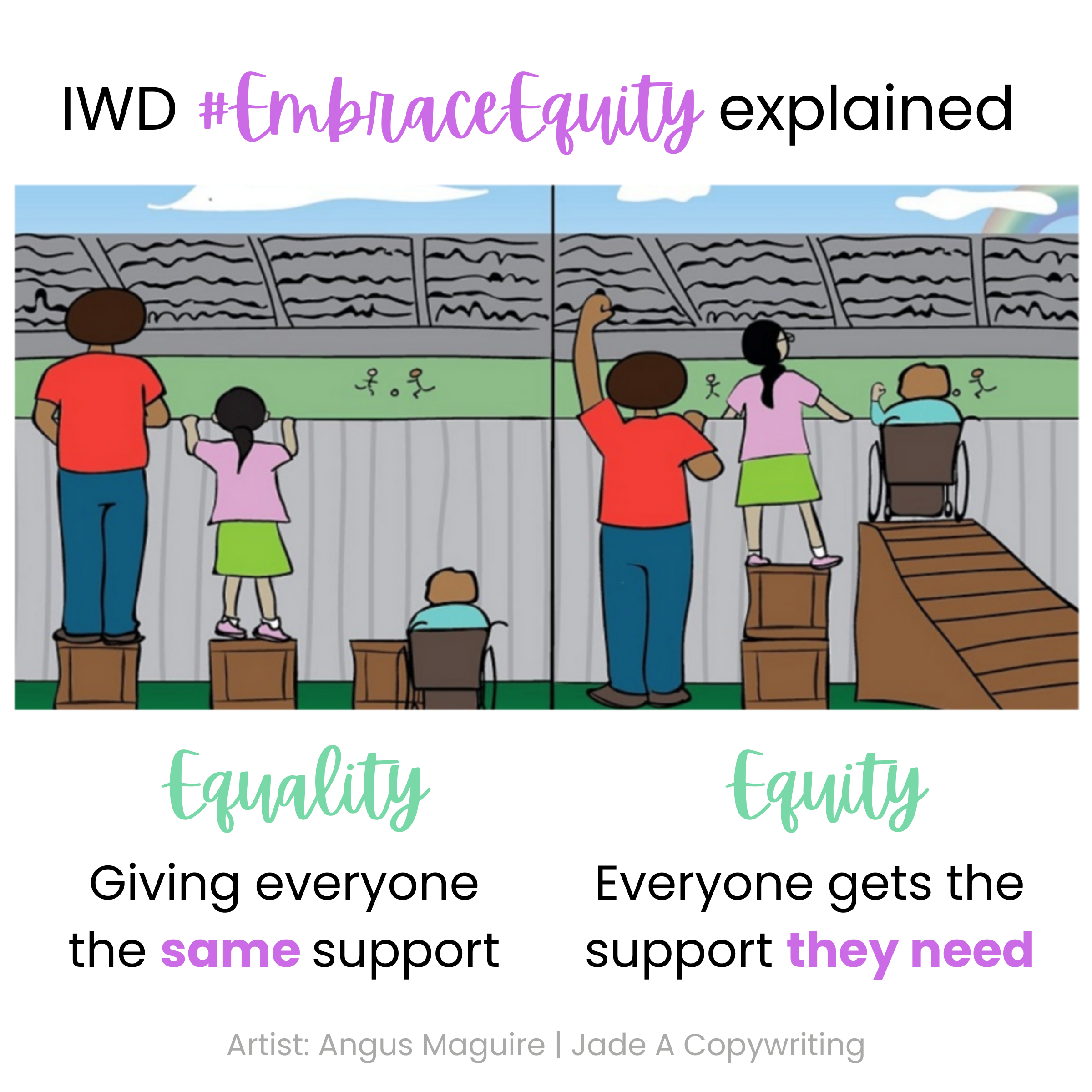International Women’s Day 2023: Embrace Equity
The theme for International Women’s Day 2023 is ‘Embrace Equity’. But what does that mean?
International Women’s Day has historically been about achieving equality for women. This year they’re opening up the conversation to acknowledge that equal treatment can have unequal results, and so we should be thinking about how we can treat people equitably instead.
Equity isn’t just something that’s in your house. The first time I heard about equity in terms of justice was via the below cartoon. Simple but super effective, it shows that treating everyone equally can still result in inequality.
The difference between equity and equality
‘Equality means each individual or group of people is given the same resources or opportunities.
Equity recognizes that each person has different circumstances, and allocates the exact resources and opportunities needed to reach an equal outcome.’
“People start from different places, so true inclusion and belonging require equitable action.”
Image description: The picture shows the difference between treating people equally and equitably. A man, child and wheelchair user are trying to look over a fence. In picture 1 they've all been given a box, treated equally, but the wheelchair user still can't see.
In the second picture they’ve been given what support they need - the man none, the child a box to stand on and the wheelchair user a ramp. They’ve been treated equitably and can all see over the fence.
Giving everyone the same support, a wooden box, has only changed things for the middle person. The person on the left didn’t need the box to look over the fence anyway, and the person on the right is in a wheelchair so the box is no use at all.
Everyone has started from a different place but their individual needs haven’t been considered.
There’s also this thing called intersectionality
There are lots of versions of this cartoon, as shown in this International Women’s Day blog post. But I particularly like this one because it shows that intersectionality plays a huge part in equity and equality. In this case, the intersectionality of disability.
What’s intersectionality?
“Intersectionality is the acknowledgement that everyone has their own unique experiences of discrimination and oppression, and we must consider everything and anything that can marginalise people – gender, race, class, sexual orientation, physical ability, etc .”
Someone in a wheelchair needs different support than a non-disabled person. Equally, not all women need the same support, for example, Black or trans women have different experiences to white or cis women, and so will need different supports.
This is why we should be treating people equitably, rather than equally. Equal opportunities aren’t enough.
What does equity mean for my workplace?
If you’re serious about equality for women in your workplace, and you bloody well should be, think about the different types of women that make up the workplace. What do the disabled women need? What do the women of colour need? Remember intersectionality.
What can you do or put in place for the different types of women that you have or, crucially, don’t have working for you? Think about why they might be missing and what you can do to fix that.
“Equality is the goal, and equity is the means to get there.”
Buying every woman a massage voucher and calling it a day isn’t good enough. Look at your pay data. Look at who is in the room in important meetings, and who’s missing from the room.
Blanket approaches won’t work - you’ll need to make lots of different changes in order to treat people equitably. It will take effort. But it will have a big impact on achieving equality in your workplace.
And most importantly: spread the word about equity over equality to everyone you know. Keep the conversation going past the 8th of March.
Together we’ll make change happen.


